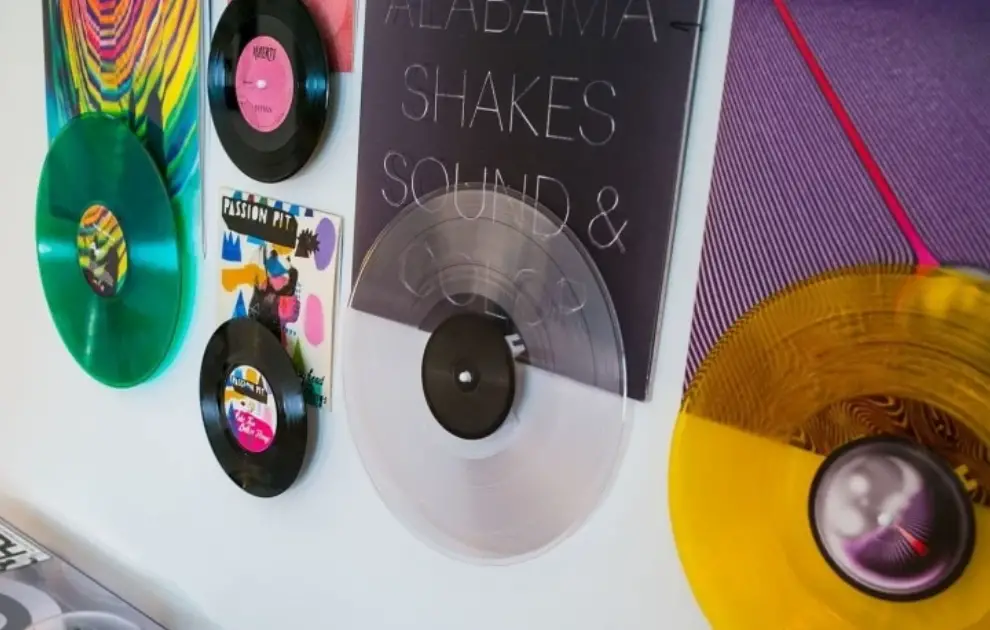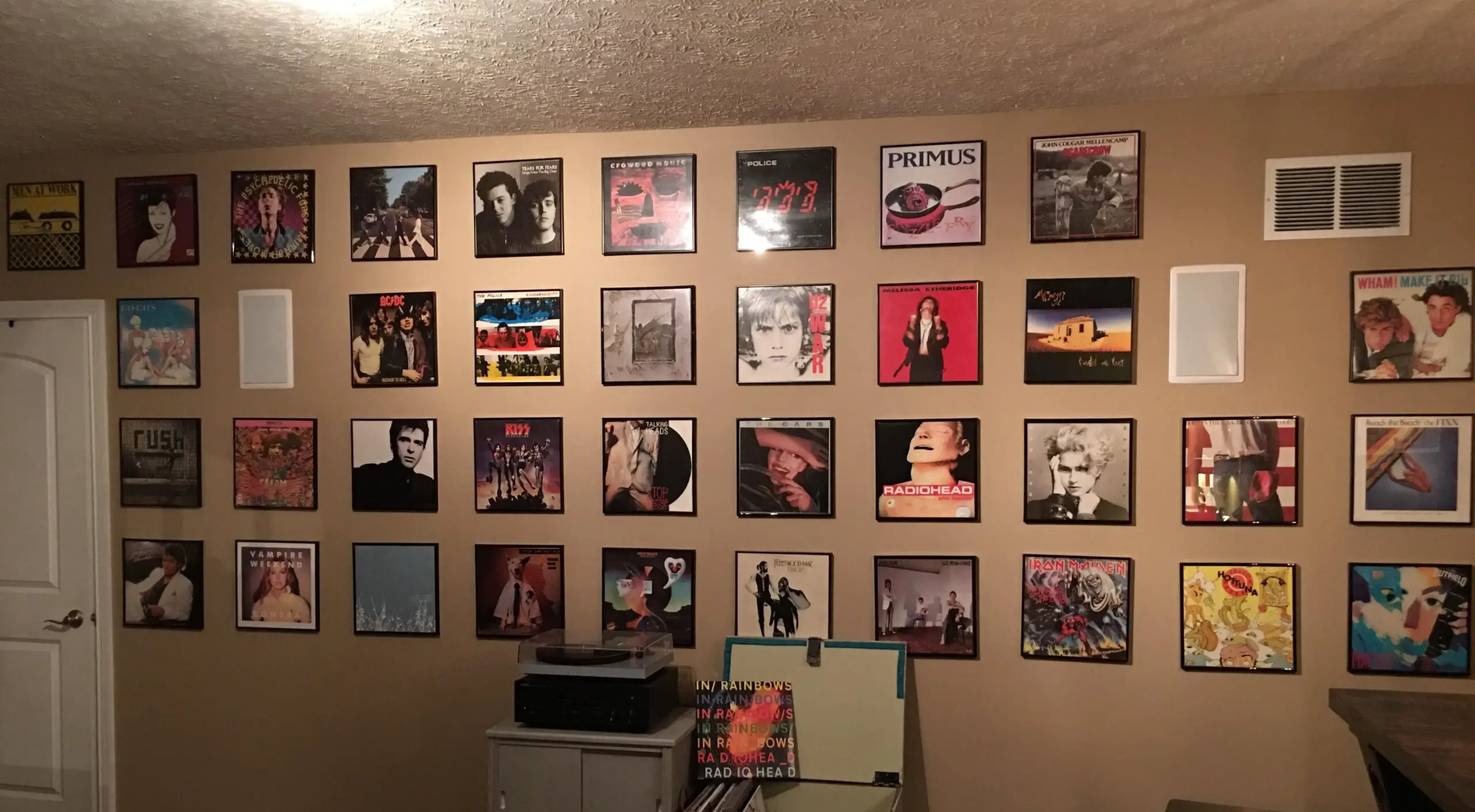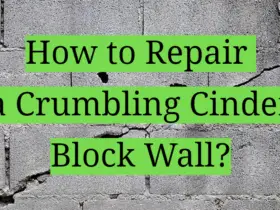Looking to add a touch of personality to your walls? Vinyls are a great way to do just that! But before you can start hanging them, you need to know how to do it properly. This guide will walk you through the entire process of hanging vinyls on your wall. It will cover everything from choosing the right adhesive to creating the perfect installation plan. So, whether you’re a beginner or an experienced vinyl hanger, this guide has something for everyone!
History of vinyls
Vinyl records have a long, fascinating history. Vinyl records were first developed and released in 1948 when Columbia Records introduced the vinyl long-playing (or LP) record.
This format was revolutionary at the time – it allowed for music to be played continuously on one side of a record without having to flip it over every three minutes or so – a huge improvement over earlier 78 RPM records which held only a few minutes of sound each.

Over the next couple of decades, vinyl records became the go-to music format for artists and fans alike, becoming widely popular in the 1950s and 1960s. Despite competition from other formats like cassettes and CDs, vinyl has remained relatively popular through the years due to its warm sound quality and unique physical nature.
In recent years, vinyl has experienced a resurgence of interest from music fans and artists alike, with many new releases being put out on vinyl as well as classic albums being re-released in the format.
Vinyl has become a symbol of cool for many music fans today; it’s seen as not only an enjoyable listening experience but also a way to show off your taste in music. With so much to offer, it’s no wonder that vinyl records have such a long and storied history!
Nowadays, vinyls can also be used for decorating. Vinyls come in a variety of colors, shapes, and sizes and can be used to create unique wall art, shelves, or even furniture [1].
Why do people hang vinyls on their walls?
People hang vinyls on their walls for a variety of reasons. They can be used as art, a way to express personal style, or even just a conversation starter. There are other reasons to consider.
Vinyls are easy to install, they come in a wide variety of sizes and styles, and they can be cheaper than other wall art. The look of vinyls on the wall is also timeless and never goes out of style.
Vinyls can fit into any interior design scheme, from contemporary to vintage. They have come a long way since the 1950s record albums, giving them a nostalgic feel that resonates with many people. Not only do vinyls look great on your walls but they often also represent memories that you can share with friends and family.
What You’ll Need to Hang Records On Wall?
To hang records on the wall you’ll need:
- Hammer or drill (depending on wall material)
- Picture hanging kit for your wall type
- Pencil and level
- Nails or screws to fit the picture hanging kit
- Record frames
- Wall anchors (if needed)
- Drywall plugs (if using a hammer/nail combination)
The most important part is to use the right hardware for your wall type, as this will ensure that your records are hung securely without damaging the walls. It’s also essential to measure twice and mark where you want each record framed before proceeding with any drilling or hammering. This way, you can make sure your records are hung in a neat and orderly fashion.
Once you have the right hardware, you’ll need to determine where the frames will hang on the wall.
To do this, take the measurements of each frame and then use a level and pencil to mark off the space evenly across the wall. Once all of your marks are made, it’s time to start hanging! If you’re using nails or screws for your picture hanging kit, make sure to pre-drill holes into the wall before driving them in. This will ensure a secure hold without damaging your walls.
As an alternative to nails or screws, you can use wall anchors if needed. Wall anchors are great because they spread the force of the nail or screw over a larger area, reducing the chance of your records being accidentally knocked off.
Finally, if you’re using a hammer/nail combination for hanging your records, use drywall plugs to ensure that the nails are securely held in place. Drywall plugs create a much sturdier hold than regular nails and will keep your records safely affixed to the wall.
Once all of these steps have been completed, you can now proudly hang up your cherished vinyl collection! Make sure to step back and admire your handiwork once it’s complete – it’s something you should be proud of!
How to Hang Records On a Wall Without Nails?

Magnetic Floating Record Hangers
Magnetic floating record hangers are an easy and stylish way to hang your records on a wall without using nails. These special hardware pieces attach to the corner of each record sleeve, creating a magnetic suspension that holds the record against the wall.
Installation is simple and doesn’t require any hammering or drilling – just make sure you have enough room for the hangers on your wall beforehand.
Magnetic floating record hangers are available in a wide variety of styles, so you can always find something that matches your home décor. They’re also relatively inexpensive and come with all of the necessary mounting hardware included. Best of all, they won’t damage your walls if you ever decide to take them down.
Command Strips
Command Strips are one of the most popular and widely available tools for hanging items on walls without nails. All you need to do is attach a Command Strip to the back of your record sleeve, then press it firmly against the wall – no hammers or drills necessary!
Command Strips come in a variety of sizes and styles, so it’s easy to find something that fits your decorating needs. Plus, they can be easily removed from your wall without leaving behind any damage or residue.
3M Adhesive Hooks
3M adhesive hooks provide another great way to hang records without using nails. These special hooks are designed with an extra-strong adhesive backing that sticks securely to almost any surface – even brick and concrete! Plus, they come in a variety of sizes and styles, so you can find something that fits your decorating needs.
Cable Suspension System
If you’re looking for an ultra-durable solution that won’t damage your walls, look no further than a cable suspension system. This innovative technology uses special cables and hardware pieces to suspend items from the ceiling without using any nails or screws. Installation requires some basic tools and knowledge, but once it’s complete, you can rest assured knowing that your records are firmly secured against the wall. Cable suspension systems are also adjustable, so you can easily reposition your records as needed.
Album Cover Display Frames
If you’d rather keep your records out of sight, consider buying some album cover display frames.
These stylish frames come in a variety of sizes and styles and allow you to show off your favorite album covers without using any nails or screws. Installation is simple – just slide the frame around the record sleeve and attach it using the included mounting hardware.
Heavy Duty Double-Sided Tape
For a quick and easy solution, look no further than heavy-duty double-sided tape. This type of tape comes with an extra-strong adhesive backing that can be used to stick almost anything to your wall without using nails or screws. It also works great for hanging lighter items like posters and art prints.
Picture Frames
Picture frames are the perfect way to hang your records without using any nails or screws. All you need to do is slide the record sleeve into the frame and attach it to the wall with a few pieces of mounting hardware. Plus, there’s a wide variety of styles available, so you can easily find something that matches your home décor.
Wall Mounted Hooks
If you want a more traditional solution, consider installing some wall-mounted hooks. These special hooks come in a variety of sizes and styles and can be securely mounted onto almost any surface – even brick and concrete! Once installed, all you have to do is hang your record sleeve from the hook – no nails or screws necessary!
Wall Shelves
Finally, if you want an elegant way to display your records without using any nails or screws, consider installing some wall shelves. Wall shelves provide a great way to show off your favorite albums while also keeping them out of the way. Plus, they come in a variety of sizes and styles, so it’s easy to find something that fits your decorating needs [2].
The dos and don’ts of hanging vinyl records on your wall
When it comes to showing off your vinyl record collection, you have a few options. You can display them on an open shelf, in an enclosed cabinet or you can hang them on your wall! But if you’re going for the latter option, there are some dos and don’ts of hanging vinyl records that you should be aware of.

First and foremost, always use anchors when hanging any type of artwork on the wall. This will ensure that the records stay securely attached to the wall, preventing damage from accidental detachment or toppling over.
Next, never hang your records using regular nails or tacks as this can create unsightly holes or even cause warping to the discs themselves. Instead, look for special vinyl wall hangers that are specifically designed to hold the weight of your records.
Finally, avoid placing your vinyl records in direct sunlight as this can cause discoloration and warping over time. If you must hang your records near a window or other source of natural light, make sure you have curtains or blinds that can be closed to protect them from fading rays.
By following these tips, you can ensure your vinyl record collection remains in tip-top condition for years to come! So get out there and start showing off your music obsession with style [3]!
How to take care of Vinyls?
Taking care of your vinyl collection is important to ensure that each record remains in the best condition and lasts for years. Here are some tips on how to take care of your vinyls:
- Clean Your Records: Dust or dirt can cause static electricity, which can attract more dust or dirt and eventually lead to damage like scratches or warping. You should clean each record before you play it with a soft brush, special cleaning solution, and microfiber cloth designed specifically for records.
- Store Vertically: Storing your records vertically instead of horizontally ensures they’re not stacked too high and keeps them from warping over time because of the weight of other records on top.
- Use High-Quality Inner Sleeves: Many records come with paper sleeves, but if you want to maximize the longevity of your collection, using a high-quality inner sleeve is a must. This will protect against dust and other particles from getting onto your record and causing damage.
- Keep Your Records Away from Heat & Direct Sunlight: Exposing your vinyls to heat or direct sunlight can cause warping over time. Keeping them in cool, dry places like closets and bookcases away from windows or heating vents is best for their preservation.
- Play with Care: You should always handle your records with clean hands and use a quality turntable with good tracking force and anti-skate adjustments to ensure that they play properly without damaging them.
- Never Touch the Record Groove: The grooves on a record are delicate and if you touch them with your fingers, you can damage the record or leave a residue that will attract dust and dirt. Always use a cleaning brush before playing to remove any debris in these grooves.
- Don’t Overplay Your Records: While it can be tempting to listen to your favorite records over and over again, this can cause wear and tear on them over time. Try rotating between several different records so that they all remain in good condition for longer periods.
By following these tips, you can ensure that your vinyl collection is taken care of properly and will stay in great condition for years to come [4].
How to hang vinyl records on your wall? Step-by-step guide
If you want to hang your vinyl records on the wall, here is a step-by-step guide to help you out:
- Gather your materials: Vinyl records, picture frame hooks, wall anchors and screws, and a hammer.
- Measure the space on your wall where you want to hang your vinyl records and mark it with a pencil.
- Place two picture frame hooks into the wall at the marked area, making sure they’re level. Secure them in place by hammering in the wall anchors provided in your kit or purchased separately.
- Insert one screw through each hook into the record cover of your vinyl record and then carefully remove the screws so that you can save them for later use when hanging other records.
- Hang your record on the two hooks by inserting the screws through the cover and securing them in place with a screwdriver.
- Repeat these steps for other vinyl records you want to hang on the wall.
- Sit back and enjoy your stylish vinyl record wall art!
Spotting Fake Vinyl Records: A Comprehensive Guide to Authenticity

When it comes to collecting vinyl records, authenticity is of paramount importance. Fake and counterfeit vinyl records have been circulating since the early days of record collecting, and they can be difficult to spot. Below, we’ll discuss some strategies for authenticating your vinyl collection so you can ensure that all your records are genuine.
- Condition: Look closely at the overall condition of the record. If it looks too good to be true–for example, if a 50-year-old record appears brand new – it may be a fake. Be sure to inspect both sides of the disc as well as its label for any signs of wear or damage.
- Packaging: Take a close look at the album cover and any other accompanying material, such as the lyric sheet or poster. Genuine vintage records often have signs of wear and tear on their packaging. Fake records, by contrast, will generally appear fresh and new with no visible signs of aging.
- Label: Check the label to see if it looks authentic. Many counterfeit records are made from cheap materials that don’t closely resemble the original labels used for legitimate releases. If you know what a genuine record label should look like, you can easily spot any obvious discrepancies between it and the label on your record.
- Sound Quality: Listen closely to the music itself – does it sound too clean or too polished for its age? Authentic vintage vinyl will usually have some degree of audible surface noise, whereas counterfeit records will often sound too perfect.
- Reputation: Check the reputation of the seller. If they have a history of selling fake or counterfeit items, you should be wary of trusting them with your purchase.
By following these steps, you can ensure that all the records in your collection are genuine and authentic. With these tips in mind, collecting vinyl will become an even more enjoyable and rewarding experience!
FAQ
Do command strips damage vinyl?
No, Command strips are designed to be safe for use on a variety of surfaces including vinyl. They feature an innovative adhesive technology that is specially formulated to hold strongly and remove cleanly without leaving any residue or damaging the surface. Additionally, they are easy to install as no tools are required – just peel and stick! With Command Strips you can easily hang items up to 3 kg on most smooth surfaces with ease. So, it’s perfectly safe for your vinyl wall decal or other similar decor items.
Can command strips be used outside?
Yes, Command Strips can be used outdoors but only when using the Outdoor Hooks & Clips range. This special range is designed specifically for outdoor use and features an advanced adhesive technology that is resistant to rain, snow and extreme temperatures. This means they can be used to hang items such as decorations, lights or signs outdoors without worry. However, it’s important to note that the products in this range are designed for short-term use only so should not be left outside all year round.
Can command strips be reused?
Yes, Command Strips can typically be reused multiple times provided they have been removed from the surface carefully using the tab located at the bottom of each strip. To prepare them for reuse, make sure there isn’t any residue left on either side of the strip before attaching it again.
Additionally, avoid stretching or pulling too hard on a Command Strip as this may reduce the effectiveness of its adhesive.
Are command strips safe for walls?
Yes, Command Strips are designed to be safe for use on most surfaces including walls. They feature an innovative adhesive technology that is specially formulated to hold strongly and remove cleanly without leaving any residue or damaging the surface. Additionally, they are easy to install as no tools are required – just peel and stick! So you can confidently hang items up to 3 kg on almost all types of walls with ease.
Can command strips damage paint?
No, Command Strips have been designed specifically not to damage paint when used correctly. They feature a revolutionary adhesive technology that securely holds items up to 3kg in place without leaving any sticky residue or damaging the surface. Moreover, they’re also easy to remove and can be used multiple times – just make sure there isn’t any residue left on either side of the strip before attaching it again. So you don’t need to worry about damaging your paint when using Command Strips.
How do you display vinyls without damaging them?
Vinyls can be displayed without damaging them by using special wall mounts or adhesive strips. Wall mounts are self-adhesive hangers that attach directly to the back of your vinyl, so they’re perfect for displaying thin pieces such as record covers.
For heavier items, you can use Command Strips – an innovative adhesive technology that is specially formulated to hold strongly and remove cleanly without leaving any residue or damaging the surface. It’s also easy to install with no tools required – just peel and stick! So you can easily hang up your vinyl safely without worry.
What can ruin vinyl records?
Heat, humidity, and direct sunlight are some of the main culprits when it comes to ruining vinyl records. Exposure to these environmental factors can cause warping, cracking, or melting of the record’s surface.
To ensure your records stay in perfect condition for years to come, keep them out of direct sunlight and away from heat sources such as radiators. It’s also important to store them somewhere with low humidity – ideally around 40-50% relative humidity (RH).
Additionally, always handle vinyl records with clean hands and use a high-quality stylus specifically designed for playing vinyls.
Should you store vinyls flat or upright?
It is generally recommended to store vinyls flat rather than upright as this prevents them from being damaged over time due to the weight of the record. Additionally, storing vinyls in a horizontal position also helps keep them out of direct sunlight and away from sources of heat which can cause warping or melting over time. It’s also important to make sure they are stored somewhere with low humidity – ideally, around 40-50% RH – as extreme fluctuations in humidity levels can lead to mold growth or other damage.
So, for optimal longevity and protection, it’s best to keep your vinyl records stored flat. An alternate way would be to use shelves specifically designed for storing LPs, which are slanted to ensure that the records stay flat regardless of how much you add or remove. That way, your records are both secure and easy to access whenever you need them.
Does scratching vinyls damage them?
Yes, scratching vinyls can cause irreparable damage to the record’s surface. This is because the stylus’s needle exerts a certain amount of pressure as it tracks across the grooves in the record.
Excessive pressure or force can cause permanent scratches and warping of the material, which will result in a distorted sound when playing back. To minimize this risk, be sure to use a high-quality stylus specifically designed for playing vinyls and always handle records with clean hands.
Additionally, make sure you store your vinyls flat so they don’t get warped over time. By following these simple steps, you can ensure that your vinyl collection remains in excellent condition for years to come!
How do you store records without warping?
The best way to store records without warping is to keep them in a cool and dry environment, away from direct sunlight and sources of heat. It’s also important to make sure the humidity level is low – ideally around 40-50% RH – as extreme fluctuations can lead to mold growth or other damage.
Additionally, it’s best to store records horizontally on shelves or in boxes that are specifically designed for this purpose. This helps keep the records flat and prevents them from being bent or warped over time.
Finally, when handling vinyls be sure to use clean hands and avoid putting excessive pressure on them with your fingertips. By following these simple guidelines, you can ensure that your vinyl collection remains in excellent condition for years
How long do vinyls last?
When stored properly, vinyl records can last for decades. Heat, humidity, and direct sunlight are some of the main culprits when it comes to ruining vinyl records so be sure to keep them out of these environmental factors.
Additionally, always handle them with clean hands and use a high-quality stylus specifically designed for playing vinyls.
Finally, store your records horizontally on shelves or in boxes that are specifically designed for this purpose – this helps prevent warping over time.
Why does vinyl sound better?
Vinyl records are prized for their rich and dynamic sound – a quality that digital music simply cannot replicate. This is because vinyls use analog technology, which captures the sound waves from an instrument or vocal performance in physical form on the record’s surface. Digital recordings, on the other hand, store these sounds as tiny bits of data which can be easily distorted or lost over time.
So if you’re looking for an authentic listening experience with all its nuances intact, then vinyl is definitely the way to go!
What happens if you play too much vinyl?
If you play a vinyl record too much, the stylus’s needle can start to wear out the grooves in the record’s surface, resulting in a distorted or muffled sound when playing back.
This is why it’s important to only use a high-quality stylus specifically designed for playing vinyls and always handle records with clean hands.
Additionally, take breaks between listening sessions so that your favorite records don’t get worn down over time. With these simple tips, you can ensure that your vinyl collection remains in tip-top shape for years to come!
What is Audiophile Vinyl?
Audiophile vinyl is a term used to describe high-quality pressings of a record which are mastered and manufactured with superior sound quality in mind. These pressings are often limited-run and made from the finest materials available, resulting in a richer, more dynamic listening experience than traditional vinyls.
Audiophile pressings can be identified by their heavier weight, thicker sleeve, and higher price tag – but if you’re looking for an exceptional music-listening experience, then they are definitely worth it!
What is a turntable needle?
A turntable needle (also known as a stylus) is the small metal tip at the end of the tonearm which tracks across the grooves in a record to reproduce its sound. It is important to choose high-quality needles that are specifically designed for playing vinyls to ensure the best sound quality and to avoid damaging your records. Additionally, needles should be regularly cleaned and replaced every few hundred hours of use as they can begin to wear out over time.
Useful Video: How to Hang Vinyl Record Albums on your Wall | DIY Home Décor
Conclusion
Hanging vinyls on a Wall is an easy and creative way to add a personal touch to any room. With the right tools, anyone can hang vinyls quickly and easily without damaging the walls. By following these simple steps, you’ll have your vinyls hung up in no time! Whether it’s a vinyl wall decal or an entire wall mural, your new artwork is sure to be enjoyed by all who enter your home. Give yourself a sense of accomplishment and admiration by hanging vinyls on the wall today!
References
- https://thevinylrevivers.com/a-brief-history-of-vinyl-records/
- https://frugalhomeaddict.com/how-to-hang-records-on-wall-without-nails/
- https://www.hifihippo.com/blog/how-to-hang-records-on-a-wall/
- https://www.cambridgeaudio.com/usa/en/blog/how-take-care-your-vinyl-collection










Leave a Reply